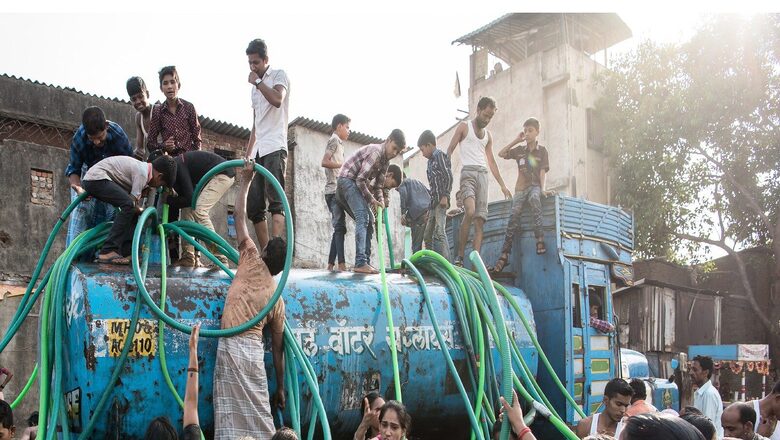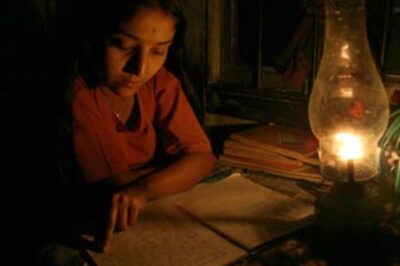
views
Water shortage is a serious issue that is being faced in several metropolitan cities in India. ‘Water’ has officially been traded in a few jurisdictions and is already a commodity subjected to futures trading. The reason for the same being climate change and its impact which has resulted in uneven distribution of water across the world and its regions through droughts, floods and natural calamities. The net result is the rise in prices across the globe which attracts investors also to bet on the price of water. United Nations estimates reveal that by the year 2050, four billion people will be affected by water shortages.
Water, as we all know, is an essential public good and basic necessity, crucial to human development, yet subjected to market mechanisms, including cost recovery demands in tariff-setting and infrastructure development. It is essential to life yet expensive to produce. Today, a billion people lack access to safe drinking water and another two billion lack access to good sanitation. Water managers meanwhile face challenges such as climate change adaptations, resource degradation through human activities and lack of financial and operational capacity.
Studies have revealed that out of 33 countries likely to witness water stress in 2040, 17 are from the Middle East. It is also predicted that China, the United States and India may also witness water scarcity. Water scarcity basically happens when the demand for water exceeds its available volume or supply. This may basically need to be clubbed with consumption and wastage of water and the way in which the existing water resources are maintained. In India, the initiative by NITI Aayog of bringing out a Composite Water Management Index (CWMI) was a step in this direction wherein the relevance of a comprehensive and integrated national dataset for water was created; this may in the long run improve the performance of water management through collective collaboration between various levels of government. The ‘Catch the Rain’ campaign initiated by the Government of India is also an eye opener and a step in the right direction, which may lead to a serious effort from the districts concerned for the conservation of water and water management.
What needs to be done?
Ensuring availability and sustainable management of water and sanitation for all has been part of the sustainable development goal and it is now high time for jurisdictions across the world to devise practical solutions for the conservation of water. Sustainable development means achieving the growth of the economy and protection of the environment in a balanced way which involves long-term attention and effort wherein water conservation should be an essential component. The basic strategy in the present urbanised world should involve a combination of constructing proper drainage systems and flood alleviation schemes coupled with the widening of canals with innovative engineering skills and methods. At the same time, an efficient sewage management system should also become part of the strategy.
A drainage master plan should be prepared wherein there should be separate main drainage systems for each major catchment facilitating the conservation of the runoff for water supply purposes which in the view of rapid urbanisation, requires upgradation to facilitate increased stormwater runoff. This should be supported by enhancing the quality of water bodies, reservoirs, canals and natural assets by cleaning water bodies with proper technology and maintenance of the same.
From best water management practices across the globe, especially in Singapore, it is evident that water has a vital role in enhancing the value of real estate as also business opportunities in the long run. Thus, the initial investment for the same shall be returned in the long run which creates a case for public-private partnership for restoration of these resources. Water pricing should also be done or devised covering full cost of production and supply as also the cost of alternative resources in the initial stage itself, which may signal the population towards conservation of the same. This may lead to installation of water saving equipment for commercial purposes by leading consumers and producers for commercial use which may be beneficial for them as also the society in the long run.
The water management techniques already experimented by certain regions of India may need adoption on a large scale. This involves different methods which include inter alia rainwater harvesting, groundwater recharge, artificial groundwater recharge, drip irrigation, sewage water treatment, conjunctive use, aquifer storage and recovery, desalination, etc. The above methods may need wider adoption based on the nature of work to be undertaken as also the feasibility for the same in the long run.
Thus, the strategy ahead may be focused upon institutional reform in the sector supported by the engagement of stakeholders, educating the public, improved efficiency and productivity of water, demand management and related reforms. However, there is no doubt that holistic management of water resources will place the economy on track for security, self-sufficiency and sustainability in the long run.
Surjith Karthikeyan serves as Civil Servant at Indian Ministry of Finance. Views are personal.
Read all the Latest Opinions here




















Comments
0 comment